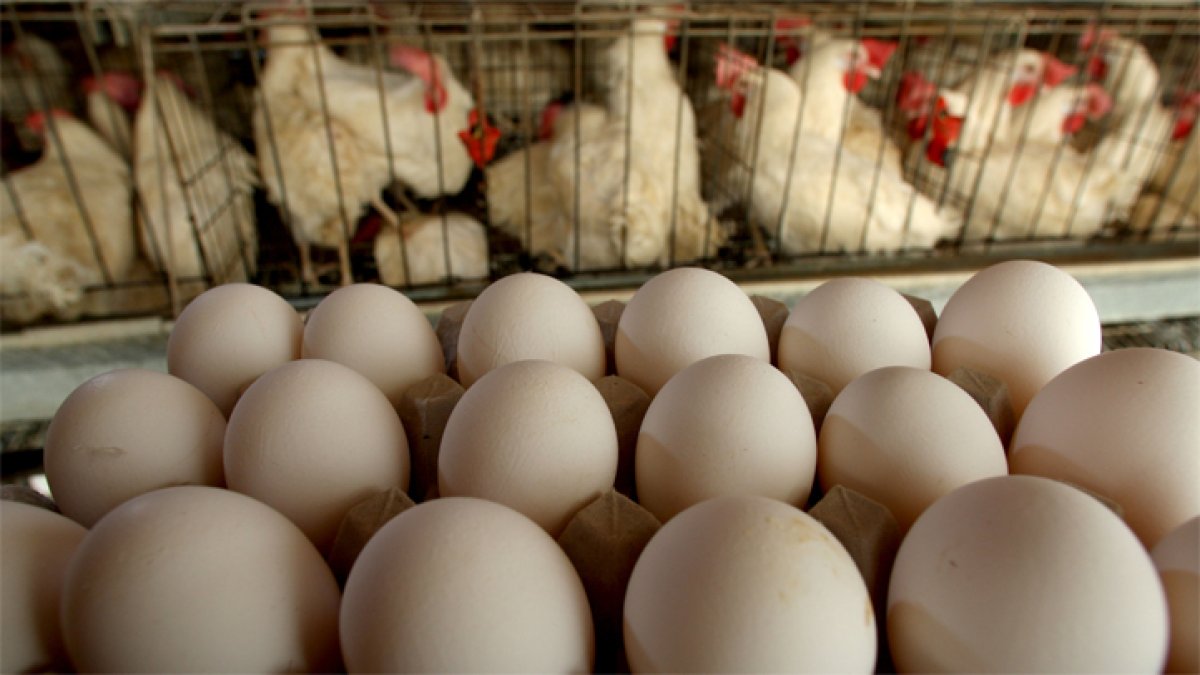The U.S. Department of Agriculture now says a nationwide recall of eggs due to Salmonella contamination that began in August is a “health hazard situation,” with officials saying there is “reasonable probability that use of the product will cause serious, adverse health consequences or death.”
The recall, which involves eggs labeled with “Milo’s Poultry Farms” or “Tony’s Fresh Market,” began in August. By Sept. 30, the Food and Drug Administration had listed it as “Class I,” which ranks as the highest risk on the FDA’s scale.
According to the U.S. Department of Agriculture’s Food Safety and Inspection Service, a Class I recall involves a health hazard situation where there is a reasonable probability that use of the product will cause serious, adverse health consequences or death.”
The recall, linked to a Midwest supplier, includes more than 345,000 dozens of eggs, officials said. More than 60 people have been sickened across nine states, including Illinois, according to the Centers for Disease Control and Prevention.
As the recall continues, here’s what to know.
Why were the eggs recalled?
According to the CDC, the recall was initiated after the FDA said samples tested positive for the bacteria. The FDA also conducted whole genome sequencing and found that the samples were related to an ongoing Salmonella outbreak investigation, the CDC added.
Consumers who have purchased “Milo’s Poultry Farms” eggs or “Tony’s Fresh Market” eggs are urged not to consume them, the CDC said.
According to the CDC, Milo’s Poultry Farms, LLC. has ceased production and distribution is undergoing “appropriate testing and sanitization of farms and processing equipment.”
Which brand of eggs are involved in the recall?
The recall involves eggs labeled with “Milo’s Poultry Farms” or “Tony’s Fresh Market.”
The eggs were supplied by Milo’s Poultry Farms, of Bonduel, Wisconsin, with the Food & Drug Administration confirming the same strain of Salmonella was found in the packing facility and hen egg laying house.
The recall includes all egg types, including conventional cage-free, organic, and non-GMO. It also includes any carton size, and expiration date.
A photo of one of the cartons involved in the recall can be found below.
Where were the eggs sold?
According to the CDC, the recalled eggs were sold in restaurants and stores in Illinois, Michigan and Wisconsin.
Illnesses have been reported in several other states, however.
How many people have been sickened so far?
The CDC confirmed in a statement on its website that 65 people in nine states were infected by a strain of salmonella, with 24 hospitalizations. The states include Wisconsin, Illinois, Michigan, Minnesota, Iowa, Virginia, Colorado, Utah and California, the agency said.
Of those who became ill, 11 were in Illinois, and 42 were in Wisconsin, the CDC said.
What should you do if you have the recalled eggs?
According to the CDC, consumers who have purchased “Milo’s Poultry Farms” eggs or “Tony’s Fresh Market” eggs are urged not to consume them.
The CDC advises those with the recalled eggs wash any surfaces the eggs may have touched with hot, soapy water.
Symptoms to watch for
According to the CDC, most people infected with salmonella experience symptoms such as diarrhea, fever or stomach cramps.
The symptoms typically start between six hours and six days after ingesting the bacteria. Many recover without treatment between four and seven days after infection.
Some, however, may experience more severe illness, requiring medical treatment or hospitalization. Children under 5 years old, adults 65 and older and people with weakened immune systems are most at-risk.
The CDC recommends anyone experiencing the following symptoms calls their healthcare provide:
- Diarrhea and a fever higher than 102°F
- Diarrhea for more than 3 days that is not improving
- Bloody diarrhea
- So much vomiting that you cannot keep liquids down
- Signs of dehydration, such as:
- Not peeing much
- Dry mouth and throat
- Feeling dizzy when standing up
More information can be found here.
Why might this outbreak be difficult to treat?
The CDC warned that the outbreak may be difficult to treat with commonly recommended antibiotics and could require a different antibiotic choice for those who need medication.
Laboratory testing of this strain revealed that it is resistant to both nalidixic acid and ciprofloxacin, potentially necessitating different forms of treatment for those sickened.
What else to know
The U.S. Department of Agriculture in July announced new measures to limit salmonella in poultry products. The proposed directive included requiring poultry companies to keep salmonella levels under a certain threshold and test for the presence of six particularly sickening forms of the bacteria, three found in turkey and three in chicken.
Bacteria exceeding the proposed standard and identification of any of the strains would prevent poultry sales and leave the products subject to recall.
The CDC estimates salmonella causes 1.35 million infections annually, most through food, and about 420 deaths. The Agriculture Department estimates there are 125,000 infections from chicken and 43,000 from turkey each year.
